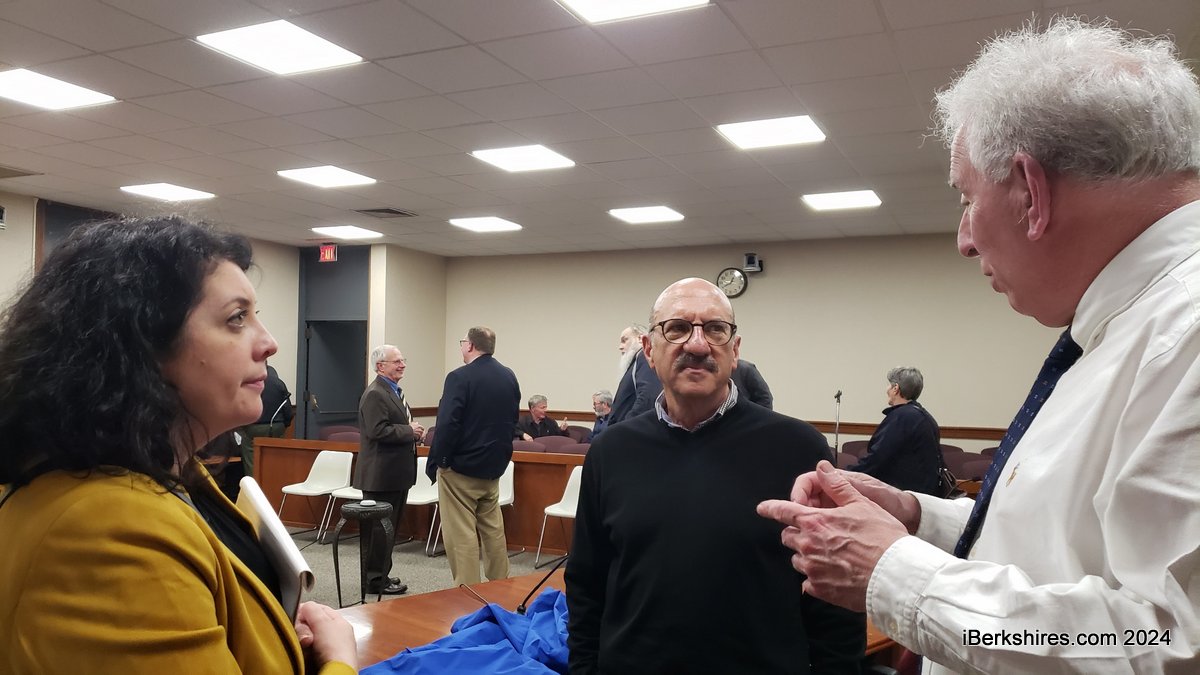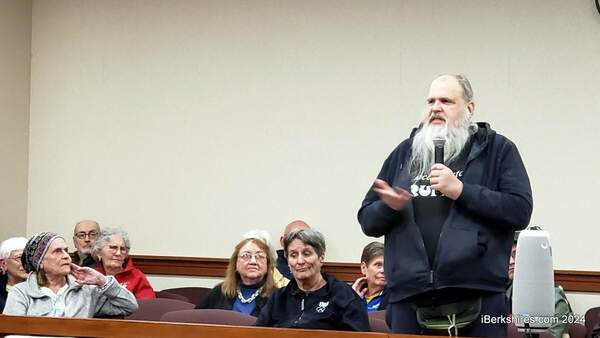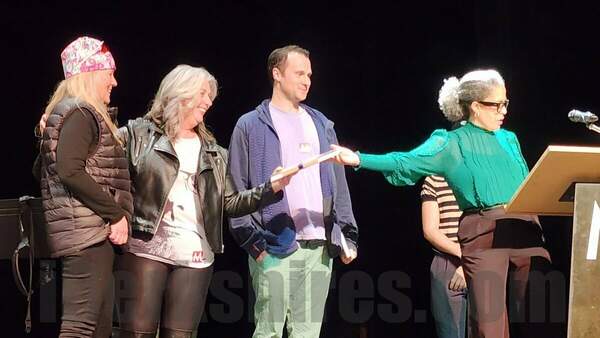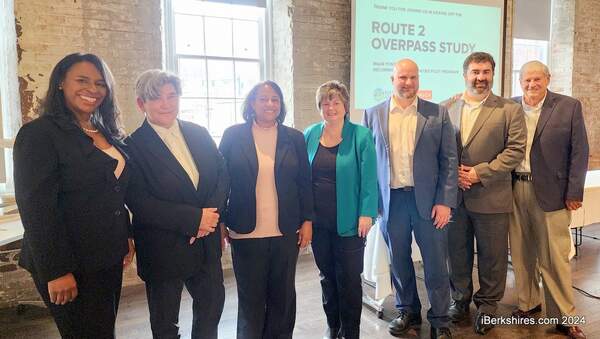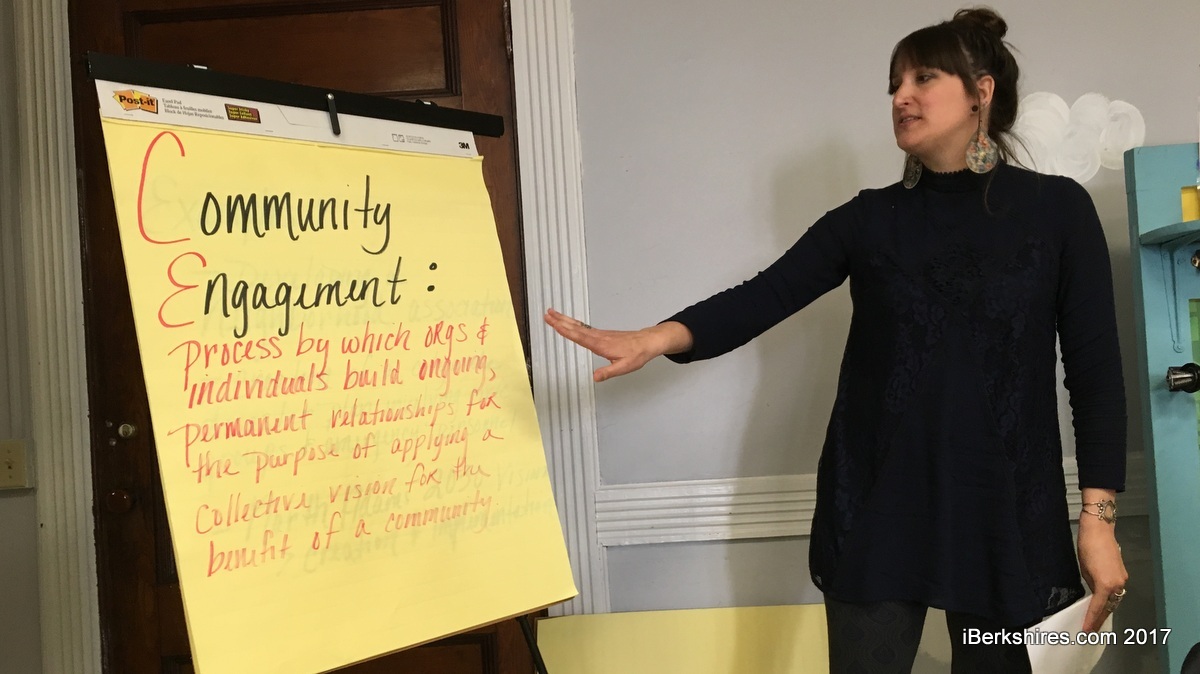
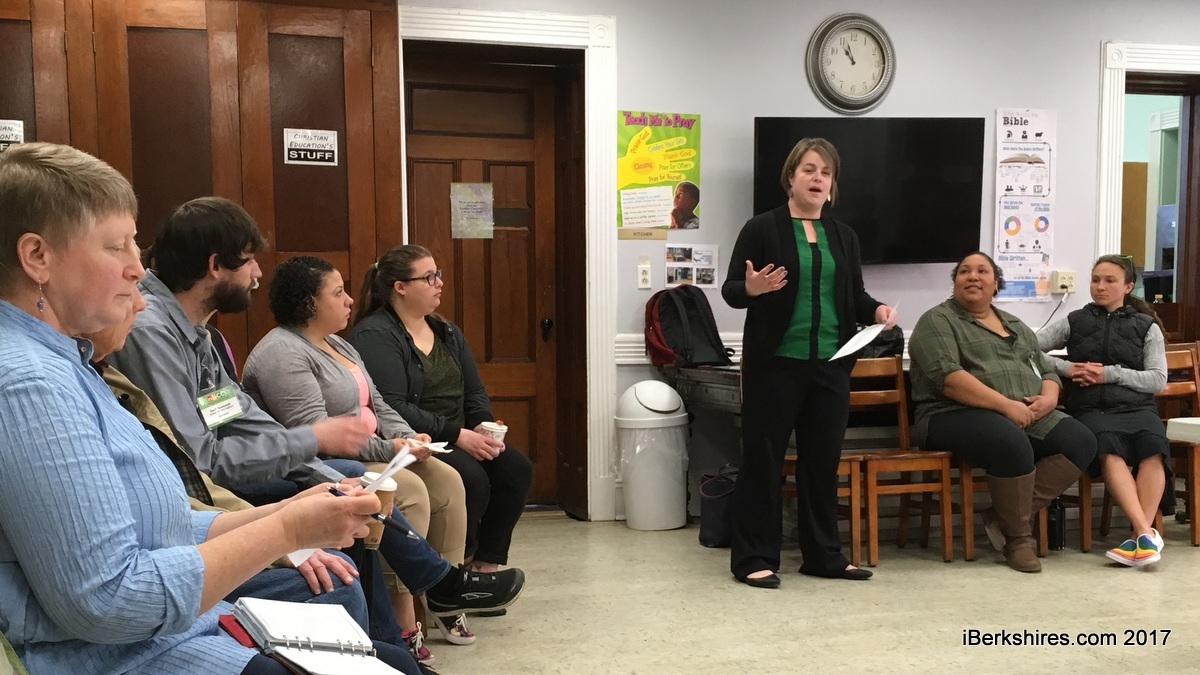
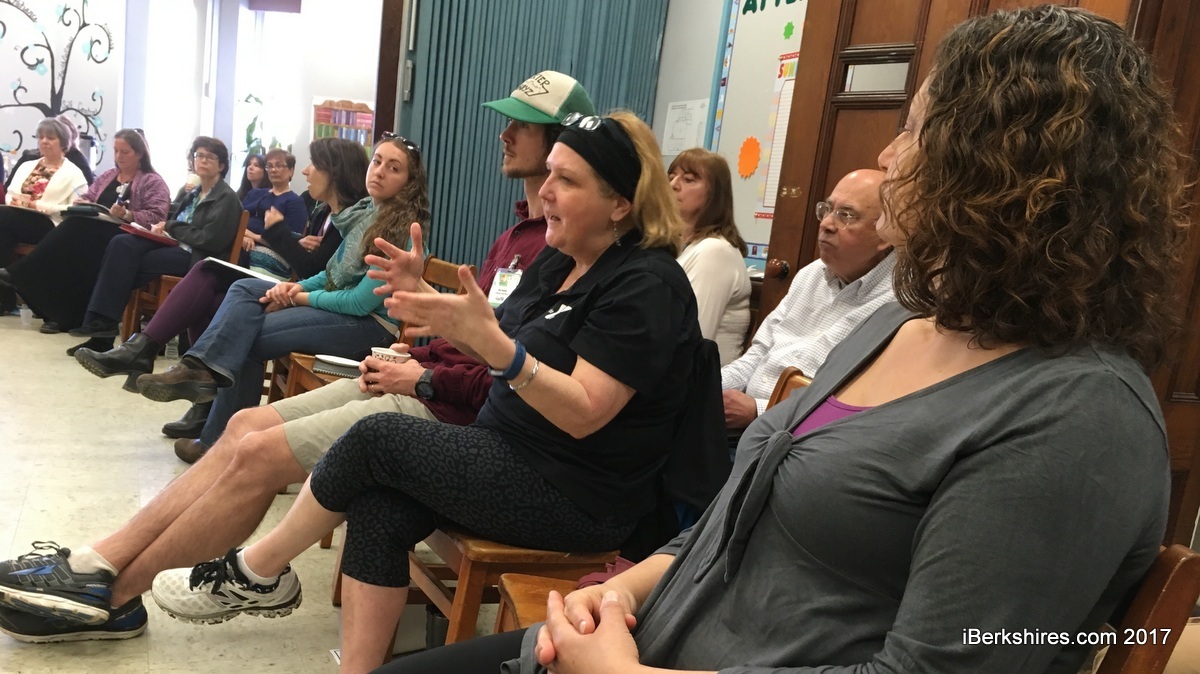
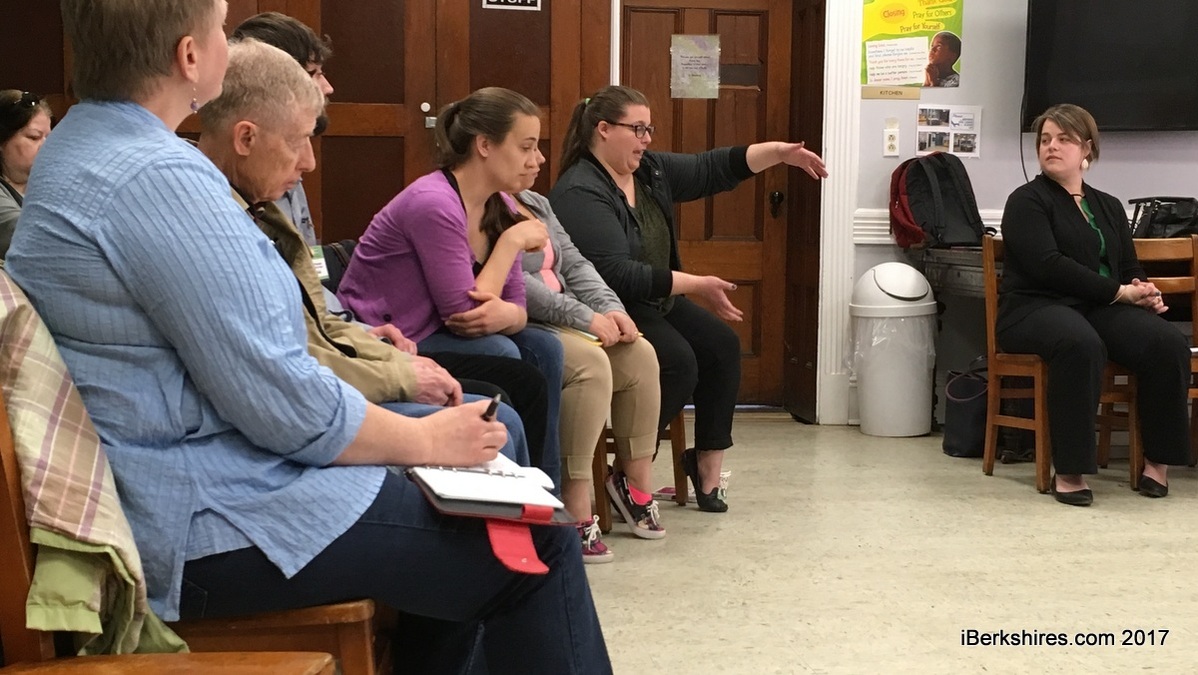
Community Involvement Discussed at Coalition Forum
NORTH ADAMS, Mass. — A larger percentage of people who come to the monthly Northern Berkshire Community Coalition forums do so because their jobs require it.
At the April forum on Friday, the focus was not on those jobs, or what those people do from "9 to 5," but rather, on what they do from 5 to 9 p.m. when they are not working.
NBCC Executive Director Amber Besaw started off the forum, titled "Creating Community 9 to 5 and 5 to 9" by asking the 50 attendees what they do in their off-hours to help the community. Bewsaw said the topic was one that had sparked interest last fall, but had gained traction with the release of the State Farm commercial that shows a man being followed by needs in the community — like homelessness, youth dropout rates and animals in need — until he signs up to be a volunteer himself.
"This is an exciting topic," Besaw said. "There's sort of a thing out there. People are looking for an opportunity to help."
Some ways that people at the forum said they helped included coordinating a program to send coupons to military families, volunteering as a family mentor, joining the Roots Teen Center board of directors, teaching Sunday school and cleaning up trash in their neighborhoods.
Those are all commitments of varying degrees, and that led to the main discussion of the morning: the difference between "community engagement" and "community organizing."
Annie Rodgers, former Coalition neighborhood coordinator, took the lead on community engagement, explaining that it wasn't civic or social engagement but instead creating a broader program or plan to benefit the community.
"It's bringing a much broader community together," said Rodgers, giving examples of community engagement such as developing a neighborhood association or a creating a citywide disaster plan. "It's really looking at it in a community lens, a we're-all-in-it-together kind of thing."
Wendy Krom, the lead organizer of the Berkshire Interfaith Organizing group, explained that "community organizing" is not a direct service or one-on-one advocacy but instead about making "systemic changes." Using her own Berkshire Interfaith Organizing as an example, she said that one church can operate one food pantry, but having the group of 17 religious organizations advocate for more funding for all food pantries is more effective.
"The power of 17 versus the power of one," she said. "What BIO does is advocate at a larger level for increased funding. By coming together, they're able to approach the legislators and actually make a difference."
What community engagement and community organizing have in common, Rodgers said, is a set of shared best practices, including an emphasis on building relationships, shared values and leadership development.
Building solid and respectful relationships will help lead to discussions about shared values, which Rodgers said was "so important," especially in the case of BIO, which includes religious organizations of many different beliefs.
"People are coming at it with a different set of beliefs. But as long as you have the same values, amazing work can be done," she said.
Rodgers gave another example of something she is involved in, the "NAMAzing Initiative" to secure funding for a larger vision for Eagle Street in downtown North Adams. Rodgers said they built relationships by visiting all the shop owners on Eagle Street, had a meeting and asked for everyone to share their vision for "perfect Eagle Street" to pull out shared values, and then voted on actions to take.
"What's so great is that it wasn't one leader coming up with these ideas. It was the group coming up with the ideas," she said, adding that the group was made up of long-time and new business owners. "It allowed everybody to have an equal footing."
Krom said building relationships is also at the top of the five steps to community organizing, followed by forming research teams, negotiations, public action and then evaluation. The public action, she said, can be to call for more action or to thank those who already have pledged to take action.
"Actions are about holding ourselves and our public officials accountable," she said, giving examples of trying to help people displaced by a bus route change and the Great Barrington Trust Policy and Order, which deals with protecting law-abiding local residents who are undocumented immigrants from being caught in federal raids.
The forum ended with some brief information, about the Coalition's Community Outreach Training Program, a program to train the natural leaders in our community to educate and advocate for their neighbors.
Tags: community forum, NBCC,

